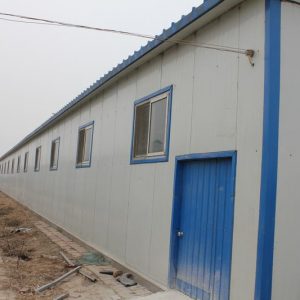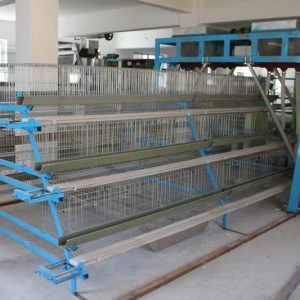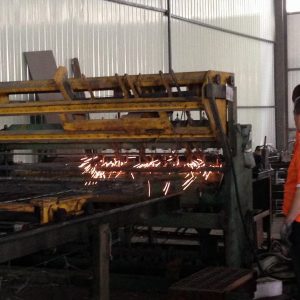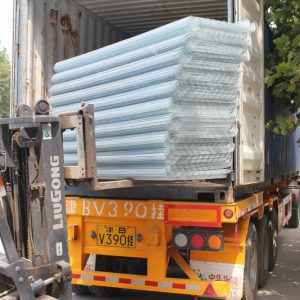
Observe the laws of nature and raise broilers scientifically
Now most broiler farmers are complaining that chickens are becoming more and more difficult to raise. What kind of virus has mutated and bacteria have developed drug resistance. Is it true? I don’t think this is the case. Viral mutations and drug-resistant strains do exist, but they are not as serious as we thought. The main reason for not raising broilers lies in ourselves, because we only pay attention to the rapid growth and abandon the laws of nature. , Regardless of the nature of the chicken.
Now I want everyone to think about a question, feeding the same feed, why are the chickens in the free range chickens at home with very few diseases, but the growth rate is not as fast as the chickens in the large-scale house? I think everyone who raises chickens knows the answer: free-range breeding has a large amount of activity, good ambient air, suitable temperature, long feeding time, etc. The truth is clear, but why not apply it to large-scale breeding?
1. Is your chicken well rested?
People do not feel energetic if they do not sleep well in a day. In fact, the need for rest is the same as that of humans. Many broiler chickens have never seen darkness from entering the chicken to the slaughter. Although you can see the chicken sleeping with closed eyes, but This chicken wants to rest, but the other chicken walks away from it or even crawls over it, or stays on the net. One chicken runs and drives the entire net frame to tremble. Can the other chickens rest? This kind of sleep is at best a semi-sleep state, and it is not easy to ensure good health without deep sleep. The chickens are very quiet in complete darkness, and the quality of sleep at this time is very high, which cannot be achieved when the lights are on. Intermittent lighting has been advocating for many years, but most farmers just don’t want to try it. In order to let the chickens rest, please use intermittent light.
2. Does your chicken have enough living space?
Although poultry have the instinct to live in groups, they always maintain a suitable population and density. What about our chicken coop? How many are less than eight per square? Breeding friends all know that the density is lower and it is easier to raise them, but when they bring in chickens, they are desperate to raise more, ten or more per square meter. Some people think about how many chickens will die during the breeding process when they buy chickens, so they buy chickens. If the chickens don’t die, what should you do? Can you reduce the density in the house? How many people’s chickens have to squeeze from other companions if they want to eat? How many people look at the piles of hot chickens frowning? Imagine if you raise five chickens per square meter, can the chickens be heated to death even if there is no cooling equipment in summer? In the same chicken coop, raising more often does not make more money, but the risk of losing money is much greater. Now some people are advocating the benefits of cage farming, saying that it can reduce the occurrence of diseases. It is naive. According to me, cage farming is definitely the sorrow of the broiler farming industry. Once caged chickens are managed incorrectly, you will cry too late.
3. Did you let your chicken drink enough water?
Clean and pollution-free water is the best medicine, but some of our breeding friends have hardly allowed chickens to drink clean water. They apply the medicine as soon as they enter the chicken, and continue until they are released. But which medicine has no toxic side effects? A good chicken staggers poisonously. Many veterinarians are saying that the emphasis is on prevention, but this prevention is not based on medicine. Let’s reflect on it quietly, do you really prevent diseases with medicine? Coccidia does not occur after using coccidiostat or is it a good treatment for coccidia after using coccidia drug? Some people say that medicine can block vertical transmission of diseases. It is simply a fantasy. A simple pullorum, if medicine can block the infection, what kind of chicken farm can still use to quarantine and eliminate breeders? Of course, I am not saying that the medicine is useless, but that it is not harmful to the chicken to drink more water.
4. Have you ever let your chicken experience hunger?
Hunger is a taste that every independently living animal in nature needs to taste. Its meaning is to keep animals in good condition and maintain good digestion and absorption functions. We are afraid that chickens are hungry and we are desperately letting chickens eat. Some farmers even enter the chicken coop every day to coax the chickens to eat. Sometimes we would secretly thank the chickens for overfeeding, thinking it was a good thing, but we didn’t expect that there would be a long period of non-feeding that would follow, and if we limited it properly at that time, it might be nothing. Regarding the topic of feeding restriction, I have said in detail in a previous post (http://bbs.jbzyw.com/read.php?tid-92129.html), so I won’t repeat it here.
5. Have you always let your chicken breathe fresh air?
Chickens living in the natural environment can always breathe fresh air, while raising chickens is different. Some do not dare to ventilate, and some do not ventilate in order to save fuel. There are not many hen houses that can achieve real ventilation. More often, ground-raised chickens never clean the litter, and net-raised chickens do not clean up their feces in time, resulting in high concentrations of harmful gases in the house, repeated treatment of respiratory diseases, and a high feed-to-meat ratio. Although poultry has air bags, Each breathing process can carry out two gas exchanges, and the oxygen utilization rate is much higher than that of mammals, but the damage caused by bad gases to chickens has not attracted enough attention. Most people know the direct harm of ammonia, hydrogen sulfide, etc., but they ignore the harm of carbon dioxide to chickens. Studies have shown that when the CO2 concentration in the house is below 12μg/L, the performance of chickens can be fully utilized. When the CO2 concentration in the house exceeds 12μg/L, the daily weight gain and feed utilization efficiency of chickens are reduced to varying degrees; IgA, IgG, and IgM show a downward trend; blood routine indicators and blood gas analysis show that the CO2 concentration exceeds 12μg/L. Only typical chronic respiratory acidosis; tissue sections show chicken alveolar ducts enlarged, alveoli are filled with a large amount of protein slurry, inflammatory cells and exfoliated epithelial cells, severe blood stasis in veins. Therefore, breeding friends must do a good job of ventilation management. Needless to say, when the temperature is high, it is good for the chickens to ventilate for one minute even if the temperature is difficult to guarantee. Practice has proved that frequent excrement in the severe cold season and multiple short-term ventilation can completely ensure the freshness of the air in the house.
6. Have you given your chicken enough exercise?
Life lies in exercise, and chickens are the same. There is no need to explain the reason. Although broiler chickens are more active 20 days ago, chickens basically do not exercise after 30 days, but it is the resistance of chickens during these 20 days of exercise. It is very important indeed, but do we provide the chickens with sports venues? Needless to say when the density is high, it is naturally difficult for chickens to move. Some farmers divide the chickens into many small pavilions with net fences. The chickens can only turn around in circles if they want to run, and cannot run fast. For the health of the chickens, Please get rid of those imprisonments that bind the chickens.
7. Have you given your chickens natural feed?
Nowadays, the majority of broiler chickens use pellets. The pellets are extruded and processed. Almost all feed manufacturers are promoting the benefits of pellets. What is easier to absorb than self-prepared powders, low feed to meat ratio and faster delivery. In fact, this is not the case. The growth rate of the whole process of using self-prepared powder is not slower than that of pellets. Compared with the slaughter time, the entire feeding period is at most one day away. The total feed intake is the same. From the point of view of profit, self-prepared powder can save at least a dime per catty. The quality of corn and soybean meal is at least not worse than that used in feed mills, and the resistance is much higher and there are fewer diseases. The most obvious is ascites, The incidence of sudden death, hypoglycemia, indigestion and other diseases should be greatly reduced. Even if the powder is used to postpone the day’s slaughter time, I would like to ask, if the chicken is not sick, which of our farmers will care about the hard day?
Chickens grown in nature cannot eat cooked food specially processed by people, but why are they still living in a healthy way? The crude fiber in the raw feed has an irreplaceable positive effect on the maintenance of the digestive tract function, and the high-temperature extruded pellets have changed the structure of many nutrients and are easier to be absorbed. Long-term feeding will weaken the digestion of the chicken. Absorption function, leading to continuous results of later digestive tract diseases.
Some people may ask, why are so many people publicizing the benefits of granular materials because the powder is so good? The answer to this question is very simple. One ton of pellets produced and sold by a feed factory will be worth at least five tons of powder.
It is recommended that broiler breeding friends use more powder, so how to use it is more reasonable. I suggest that broiler feeds No. 1 and No. 2 are best to use powder. When feeding No. 3, use pellets, and No. 3 is made into granules. It can increase feed intake, shorten feed intake time, and is more conducive to fattening.
8. Are you overly spoiling your chicken?
Poultry living in nature are exposed to various stresses, including fright, cold and heat, etc. So have we heard of any chickens raised at home being scared to death? Is there anyone to die? Some of our farmers were too accidental in the environment, and did not dare to cough loudly in the house. As a result, the neighbor’s house frightened the chicken to death with a kick. Some breeders care too much about the temperature in the house. The daily temperature difference is maintained very well. The chickens do not feel overheated or cold. Although this requires great hard work, it also reduces the adaptability of the chickens. At the same time, who can guarantee that their chickens will not have a large temperature difference throughout the process and will not accept any fright? The result of this is that the whole group will get sick if you catch a little cold, and knocking down a bucket will also shock the group. If we don’t spoil them from the beginning of brooding, let them adapt to various sounds and adapt to a moderate temperature difference, the chickens will not be so squeamish.



